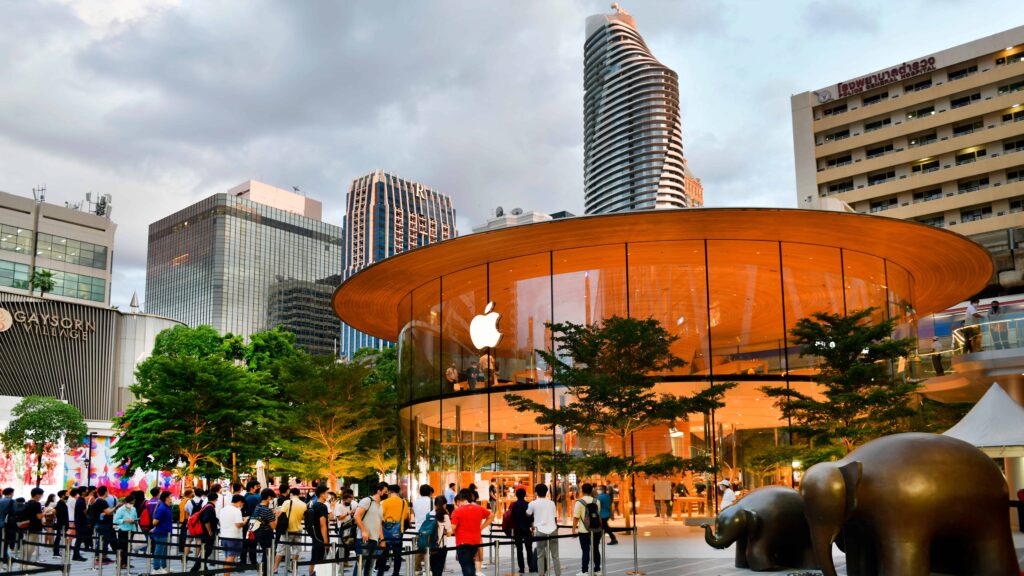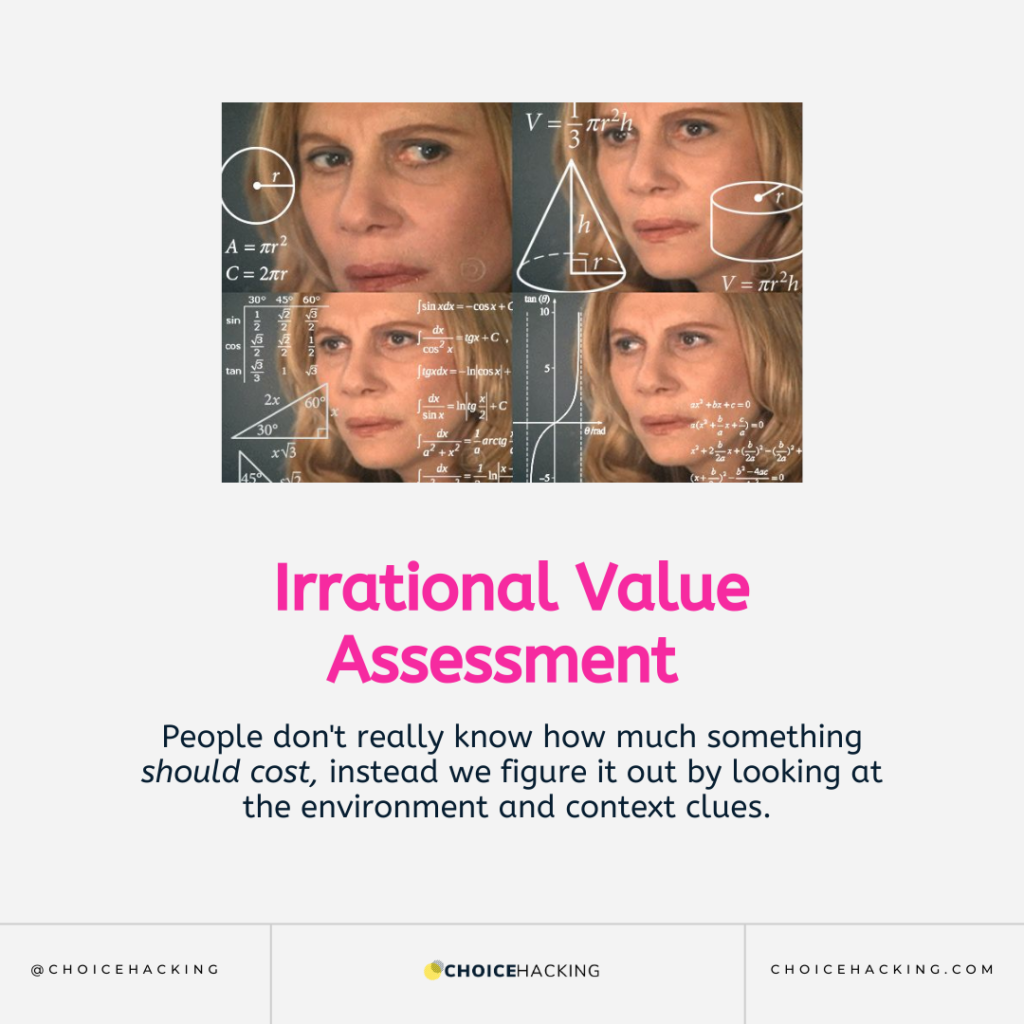- Choice Hacking
- Posts
- How APPLE used psychology to sell 2.3 billion iPhones
How APPLE used psychology to sell 2.3 billion iPhones

Hi there - Jen here :)
The iPhone changed everything.
It’s one of the most desirable and innovative products in the world.
Only creative, brilliant geniuses — like you — own an iPhone…
At least… that’s what they want you to think.
Apple are masters of creating a brand that people want to be a part of — innovative, creative, a little bit rebellious (but also really expensive).
Unsurprisingly, Apple uses some tricky psychological tactics to get you to shell out so much cash for an iPhone.
🧠 Today I’m breaking down the psychology behind Apple’s iPhone sales strategy, and how they managed to consistently dominate the smartphone market using these tactics.
You’ll learn:
How Apple Appeals to Our Emotions to Get Us to Buy
Status: How Apple Leverages This Powerful Behavioral Driver
How You Can Use Some of Apple’s Most Powerful Techniques in Your Own Business
👉 But before we get started, a reminder that you’re invited to my 90-minute Pro Member Workshop, “Conversion Boost Blueprint: The Landing Page Template That Converts at 70%+” happening TOMORROW at 2pm EST / 11am PST / 7pm London time.
If you can’t make this day/time, no worries!
I’ll share a recording with everyone who registers.
(But these recordings will NOT be available to buy after the deadline, and there are only 10 7 Guest Passes available so get your invite now - the checkout will close when it’s sold out)
Here’s what you’ll learn:
The goal is increasing your conversion rate with a psychology-driven landing page template that already converts at 70%+.
STEP 1: I’ll share the psychology-driven landing page template that increased my conversion rates by 200%+, so you can grow your landing page effectiveness by 2x (and your sales and leads can double too).
STEP 2: You’ll fill out the content for your landing page using the templates I’ll give you (and I’ll also share my personal swipe file of successful landing pages from different industries, so you have plenty of clear, specific examples of what works).
STEP 3: You’ll learn how to validate your landing page will convert browsers to buyers before putting it live with customers (and I’ll give you a simple flowchart to follow for how to tweak it once it’s in front of your potential buyers).


How Apple Appeals to Our Emotions to Get Us to Buy
You might think there’s a logical reason why you’re an Apple fan. They’re easy to use, they’re beautiful, and they have the best apps. But that’s not why you bought an iPhone.
When it comes to decision making, our minds don’t really care too much about logic.
Studies show that most of our decisions are made subconsciously, driven by factors we don’t register or even understand.
And Apple realized early on, this one critical thing about consumer decision-making:
It’s driven by emotion, not logic.
It’s not about the phone.
It’s about how the phone makes us feel.

People also use products like the iPhone to signal to other people who we are.
(Or at least who we want to them to think we are.)
Psychologists call this behavior “self-signaling” and it’s an incredibly powerful marketing lever.

Status: How Apple Appeals to this Powerful Behavioral Driver
Apple has the reputation of being an innovator.
Sometimes to its benefit, like with the iPhone.
And sometimes not, like with the Newton (look that one up, kids).
Apple push innovation at every turn — announcing some new technological breakthrough mysteriously timed to whenever there’s a new model iPhone to sell.
And you believe it because of the phone’s sleek design and innovative reputation.
You’re attracted to it because new things kick up a little bit of dopamine that gets us interested, and some fear that we might be only ones without this new sexy phone.
That combination of innovation, style, and desire makes the iPhone a powerful status symbol .
And trying to attain status is a powerful driver of human behavior.
Neuroscientist Michael Gazzaniga put it this way,
“When you get up in the morning…you think about status. You think about where you are in relation to your peers.”
Turns out, whether it’s a yacht, a Ferrari, a Patek Philippe watch, or an iPhone, there are several elements that make a product feel higher status: Exclusivity and Scarcity, combined with Authenticity and High Price.
Exclusivity & Scarcity
Have you ever noticed that when the new iPhone launches, there’s a line around the Apple store of people waiting to get it right away?

Source: Viewfinder - stock.adobe.com
Is it because Apple’s really bad at forecasting demand for the iPhone?
No, it’s because their pre-launch advertising and PR is designed to not only drive demand but to make customers think that supplies are limited.
But in reality, there are almost never iPhone shortages. Just the illusion that you might not be able to get your hands on one right away.

Apple know that the psychological and economic principle of Scarcity is a powerful driver of desire, so they stoke the flames of doubt in their biggest fans, who stand in line for the new iPhone. And when other people see the die-hards standing in line they think:
“Oh man, I better stand in line too. I don’t really want an iPhone but what if they run out? Nobody ever stands in line for a Pixel.”
High Price: Why We Want Expensive Products More
We all know iPhones are expensive. But making their phones expensive is actually a genius business move by Apple, because when it comes to price we’re easily influenced.
The economic principle Irrational Value Assessment helps explain how and why we’re so easy to manipulate.
It says people don’t value products objectively, instead we figure out how much something should cost based on context cues and how they make us feel. Price is one of the indicators that something might be high quality.
Making the iPhone expensive is a part of Apple’s strategy to drive demand because the high price makes people feel like it’s a status symbol.
If everybody could afford it, it wouldn’t make the people that bought it feel as good about themselves.

How You Can Use Some of Apple’s Most Powerful Techniques in Your Own Business
If you want to apply psychology and behavioral science like Apple, start by asking yourself questions like these:
Self-Signalling: What do we want our products to signal to customers? What should they be trying to achieve psychologically by buying our products?
Status: Is our product a status symbol? Could it be (and is becoming a status symbol right for our brand)? How might our price and positioning in the market help us become a status symbol?
Exclusivity & Scarcity: How might offering less of something, or offering it for a smaller amount of time drive desire for our product or brand?
Irrational Value Assessment: Do we think about the psychological side of pricing? How might we design the context of purchase decisions to help make the case for our product’s price?
Thought of the Week
Stop looking outside your business to grow your business.
The answers you're looking for can't be copied from a competitor.
They're inside the brain of your buyers.
Start by understanding your buyers' psychology.
The rest takes care of itself.
Until next time,
Jen
Jen Clinehens, MS/MBA Helping you use psychology and behavioral science to 2x your marketing effectiveness (so your sales can 2x, too). |


Reply